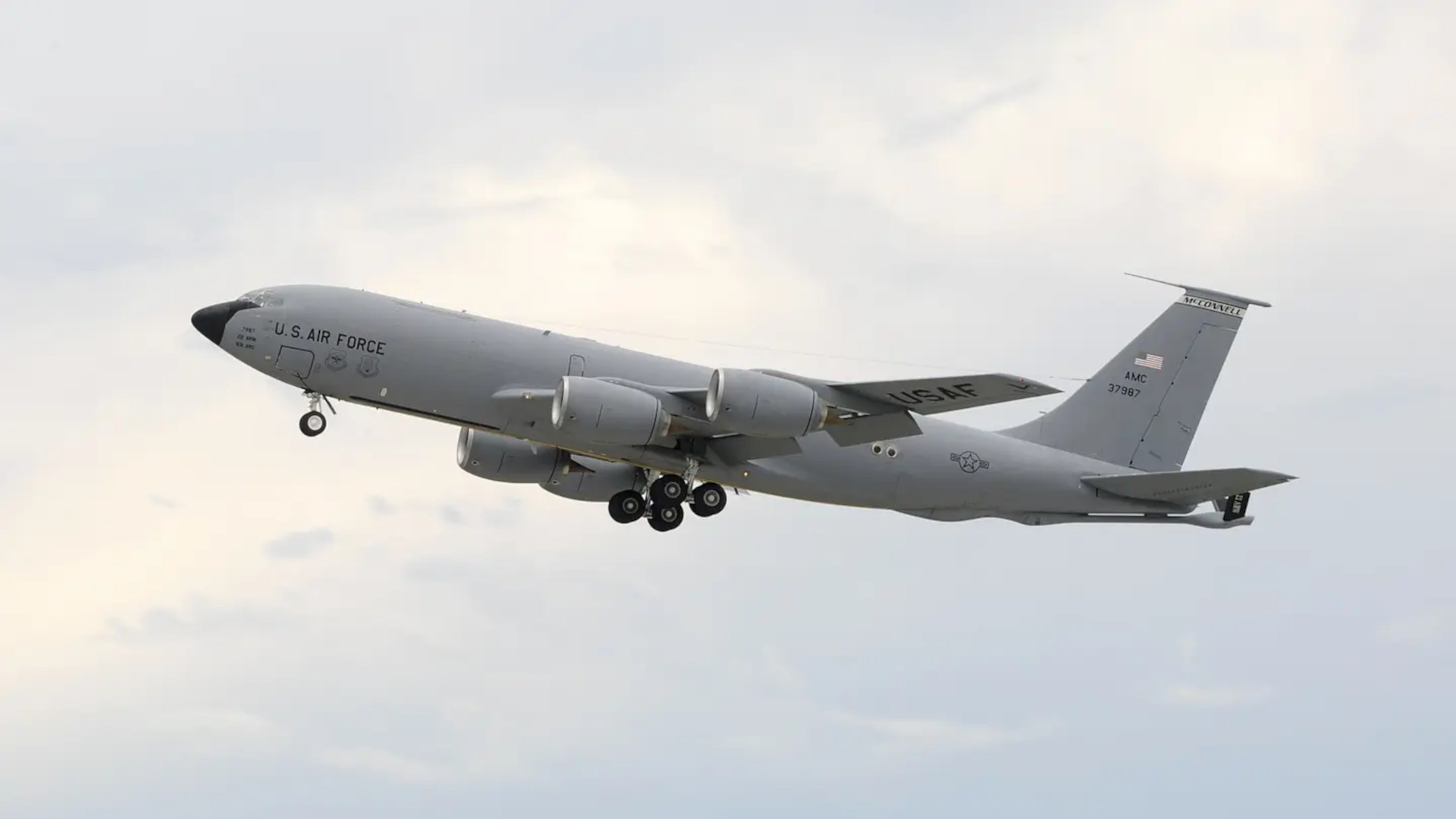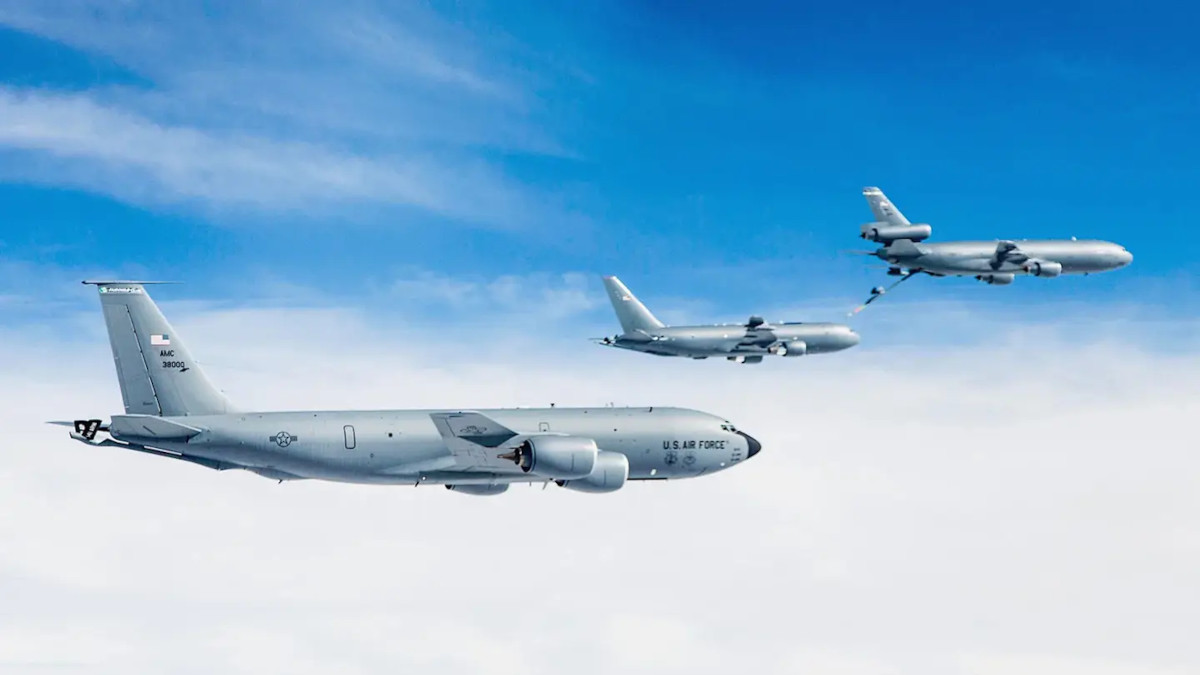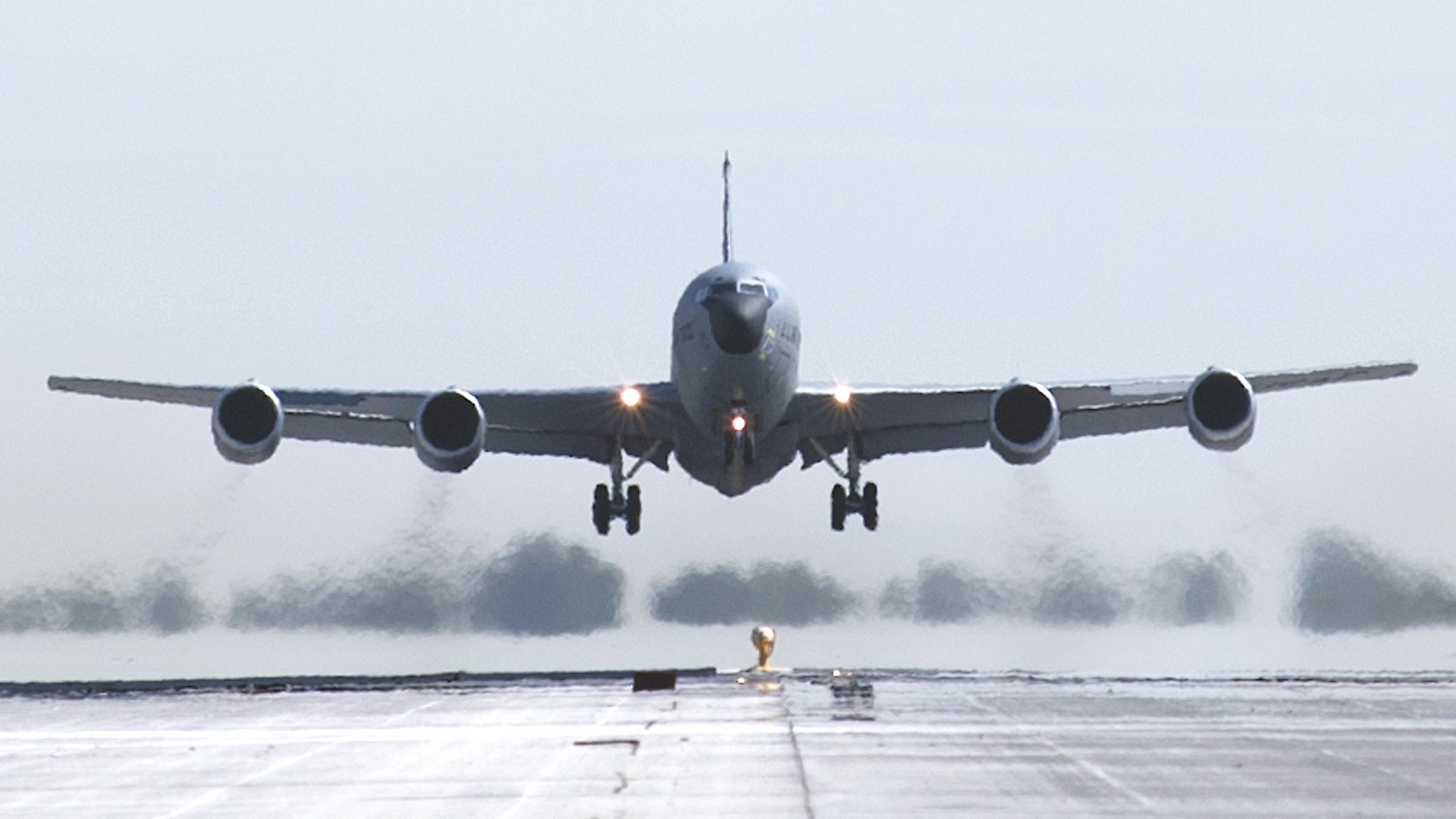The U.S. Air Force has revealed that the autopilot on a KC-135R aerial refueling tanker with the Block 45 upgrade package turned on spontaneously right as it was about to land at an unspecified location in April. The service says it has pulled engineers away from other tasks to focus on trying to fix issues with autopilots on these aircraft that have persisted for around a year now. Word of these problems first emerged last year and The War Zone was first to report that certain flight restrictions had been reimposed on these tankers as a direct result back in February.
Air Mobility Command confirmed the April incident to The War Zone and said that it is the fourth instance of an issue involving the autopilot on a Block 45 KC-135R turning on or off uncommanded to have been reported in the past 12 months. Prior to this, the Air Force had only disclosed incidents where it had appeared the autopilots had shut off unexpectedly, not turned on unprompted. There are currently 244 Block 45 KC-135Rs in Air Force service, or approximately 62 percent of its total KC-135 fleet at present.

“Four incidents of non-commanded autopilot engagement were reported in the last year,” according to a statement from Air Mobility Command. “The most recent event occurred mid-April, where the autopilot function engaged when the aircraft was approaching the landing flare.”
The aircraft and its crew appear to have emerged unscathed from this incident, but there is no doubt that it was potentially dangerous. Pilots of most aircraft pull the nose up, or flare, right before they touch down, which slows the speed of the plane’s descent and helps soften the impact with the runway.
An unexpected engagement of an autopilot system right before that point in the landing process could wrest control away from the crew and cause the plane to come down in an expected and unsafe manner, and leave little time to correct the situation. For instance, a sudden pitching down of the nose could send the aircraft into the ground, while an unexpected upward pitch could cause a dangerous stall.
In an incident last year, an Air Force RC-135U Combat Sent intelligence, surveillance, and reconnaissance aircraft suffered thankfully relatively minor damage to an engine nacelle after experiencing heavy crosswinds as it touched down at RAF Mildenhall in the United Kingdom. This underscores the general risks associated with any significant loss of control, even briefly, in the final phases of the landing process.
An autopilot system switching on or off uncommanded on any aircraft could be a very worrisome occurrence in a host of other scenarios beyond coming in to land, too. This is especially true for aerial refueling tankers like the KC-135R that are often physically linked to another plane.
“A safety plan has been generated and measures are in place to ensure crew safety for ongoing operations,” according to Air Mobility Command. The War Zone has not yet been able to confirm whether or not the restrictions regarding autopilot use on Block 45 KC-135Rs that were put into place in February are still in force.
“We continue to investigate causes related to the autopilot issue recently associated with Block 45-modified KC-135 aircraft,” Air Mobility Command’s statement added. “Engineering personnel have been diverted from other tasks, are working overtime to resolve the problem, and our crews have been notified of the incidents.”
Air Mobility Command did not immediately respond to questions about whether or not the assessment of the root cause of the autopilot issue has changed. Last year, the Air Force said that the problem had been traced to faulty batteries. In February, the service said that determination had been made “erroneously” and that autopilot’s manufacturer, Collins Aerospace, had identified a “logic error” in the system’s software as the real culprit. At that time, testing of a software fix was expected to begin in April.
Sources directly familiar with these issues have told The War Zone that crews are disabling a circuit breaker linked to the autopilot’s servos to prevent it from spontaneously switching on while flying at altitudes under 10,000 feet and when conducting aerial refueling operations.
The Collins autopilot is a major component of the overall Block 45 upgrade package, which you can read more about here. The system is substantially more advanced, and expensive, than ones used on earlier KC-135s, which do not have the ability to auto level-off or hold airspeed in level flight or during climbs and descents. This all made the system a hotly anticipated feature for Air Force crews flying these modified jets, the first of which entered service in the mid-2010s, who have now been left at least dismayed by whatever the issues are that are plaguing them.

Beyond the obvious safety concerns, if the use of the autopilot on Block 45 KC-135Rs is still restricted, this could have operational impacts. This all comes as demand for aerial refueling capacity is only growing, especially as part of planning for potential future high-end conflicts against near-peer adversaries, such as China or Russia.
While the service says it is making progress in expanding the use of its burgeoning fleet of long-troubled KC-46A Pegasus tankers, those aircraft are still years away from being able to operate in a truly unrestricted manner due to still serious issues with key systems, especially the Remote Vision System that boom operators use to link up to receiving aircraft, along with the boom itself, as you can read more about here.
At the same time, the Air Force is pushing to begin retiring older KC-135s, as well as KC-10s. The service’s proposed 2023 Fiscal Year budget would see 13 KC-135s and 10 KC-10s head to the boneyard before the end of next year.

The Air Force’s overall future tanker plans appear to be in a certain amount of flux at the moment. The service is now backing away from plans to hold a new competition for a batch of aerial refuel tankers to “bridge the gap” between the end of presently-planned KC-46A purchases and a still-notional future advanced tanker platform referred to as a KC-Z.
Contractor-owned and/or operated tankers have been presented as a possible way to increase this capacity in support of non-combat activities, freeing up Air Force tankers to support combat operations. However, so far the U.S. military’s use of the private sector in this regard remains relatively limited.
All told, it’s not hard to understand why the Air Force is now pulling personnel away from other duties to try to rectify the serious ongoing issues with the autopilots switching on and off unexpectedly on its Block 45 KC-135Rs.
Contact the author: joe@thedrive.com

